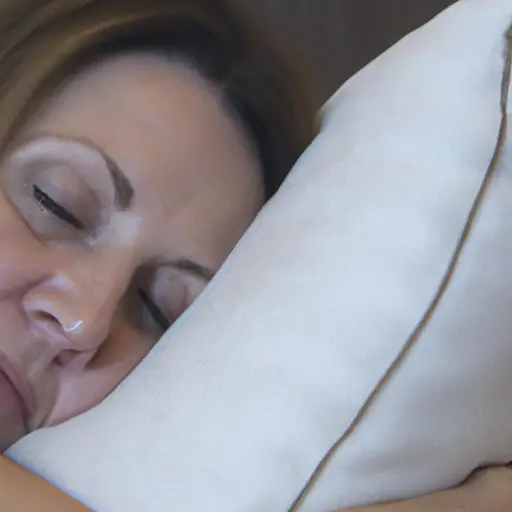Are you a new parent or caregiver looking for the best way to protect your baby’s crib mattress? A crib mattress cover might be just what you need. These covers are designed to fit snugly over your baby’s mattress, providing a protective layer against spills, stains, and other accidents.
But with so many options available, how do you know which one to choose? In this guide, we’ll walk you through everything you need to know about crib mattress covers, from the different types available to the key features to look for.
When shopping for a crib mattress cover, it’s important to consider the type of cover that will best suit your needs. Some covers are made from soft, breathable materials like cotton or bamboo, while others are designed to be waterproof to protect against spills and accidents.
You’ll also want to think about the size and shape of your baby’s mattress, as some covers are designed specifically for certain types of mattresses.
Another important factor to consider when choosing a crib mattress cover is safety. Look for covers that are certified by organizations like GREENGUARD, which test products for harmful chemicals and emissions.
You’ll also want to make sure that the cover fits snugly and securely over the mattress, with no loose or dangling parts that could pose a risk to your baby.
With these considerations in mind, you’ll be able to choose the best crib mattress cover for your little one’s needs.
Table of Contents
Understanding Crib Mattress Covers
When it comes to your baby’s crib, you want to ensure that everything is safe, comfortable, and hygienic. One essential item that can help with all three of these things is a crib mattress cover.
What are Crib Mattress Covers?
A crib mattress cover is a protective layer that goes over the crib mattress, acting as a barrier between your baby and the mattress. They come in different materials, including cotton, polyester, and waterproof fabrics, and can have different features such as zippers, elastic edges, and snaps.
Benefits of Crib Mattress Covers
Crib mattress covers offer several benefits, including:
- Protection: Crib mattress covers can protect the mattress from stains, spills, and accidents, which can be difficult to clean and may cause odors.
- Hygiene: Crib mattress covers can help keep the mattress clean, preventing the accumulation of dust mites, bacteria, and other allergens that can trigger respiratory problems.
- Comfort: Crib mattress covers can add an extra layer of comfort to the mattress, making it softer and more comfortable for your baby to sleep on.
What to Look for When Choosing a Crib Mattress Cover
When choosing a crib mattress cover, consider the following factors:
- Material: Look for a cover made of a breathable material that is soft and comfortable for your baby’s skin. If you want a waterproof cover, make sure it’s also breathable to prevent overheating.
- Fit: Choose a cover that fits snugly over the mattress, with no loose edges that can pose a suffocation risk.
- Easy to Clean: Look for a cover that is easy to remove and machine washable, as you’ll need to clean it frequently.
- Safety: Make sure the cover is free of any harmful chemicals and meets safety standards set by organizations such as the Consumer Product Safety Commission (CPSC).
By choosing the right crib mattress cover, you can help ensure that your baby’s sleeping environment is safe, comfortable, and hygienic.
Benefits of Using Crib Mattress Covers
Using a crib mattress cover provides several benefits to both the baby and the parents. Here are some of the advantages of using crib mattress covers:
Safety Advantages
Crib mattress covers offer safety advantages that can help prevent Sudden Infant Death Syndrome (SIDS) and suffocation. According to the CPSC, it is recommended to place your baby on his/her back in a crib with a firm, tight-fitting mattress.
You should not put pillows, quilts, comforters, sheepskins, pillow-like bumper pads or pillow-like stuffed toys in the crib. A crib mattress cover can help keep the mattress clean and free of any loose bedding that could cause suffocation.
Hygiene Benefits
Crib mattress covers provide hygiene benefits by protecting the mattress from stains, spills, and odors. Babies are messy, and they can have accidents that can leave the mattress soiled and smelly.
A crib mattress cover can be easily removed and washed, making it easier to maintain a clean and hygienic sleeping environment for your baby.
Durability Enhancement
Crib mattress covers can also enhance the durability of the mattress. Mattresses can be expensive, and a crib mattress cover can help protect the mattress from wear and tear, and extend its lifespan. It can also help prevent the growth of mold and mildew, which can damage the mattress and cause health problems for your baby.
Types of Crib Mattress Covers
When it comes to crib mattress covers, there are a variety of options available. Here are the three main types of crib mattress covers:
Waterproof Covers
Waterproof covers are a popular option for parents who want to protect their baby’s mattress from spills, leaks, and accidents. These covers are made from materials like vinyl, polyurethane, or polyester that prevent liquids from seeping through to the mattress.
Some waterproof covers also feature a soft, quilted top layer for added comfort. One thing to keep in mind when choosing a waterproof cover is that some materials may not be breathable, which could cause your baby to overheat.
Look for covers that are made from breathable materials like cotton or bamboo, or that have ventilation holes to allow air to circulate.
Quilted Covers
Quilted crib mattress covers are another popular option for parents. These covers feature a soft, padded layer that adds extra comfort to your baby’s mattress. Quilted covers are typically made from materials like cotton or polyester, and may be filled with materials like foam or polyester fiberfill.
One benefit of quilted covers is that they can help regulate your baby’s body temperature, which can be especially important in hot or cold weather. However, quilted covers may not be as effective at protecting your baby’s mattress from spills or leaks as waterproof covers.
Organic Covers
For parents who prefer natural and eco-friendly products, organic crib mattress covers are a great option. These covers are made from materials like organic cotton, wool, or bamboo, and are free from harmful chemicals and synthetic materials.
Organic crib mattress covers are typically more expensive than other types of covers, but they may be worth the investment if you’re concerned about your baby’s exposure to chemicals and toxins. Keep in mind that not all organic covers are waterproof, so be sure to check the product details before making a purchase.
Selecting the Right Crib Mattress Cover
When it comes to choosing the right crib mattress cover, there are a few things you need to consider. In this section, we’ll go over the material considerations, size and fit, and ease of cleaning.
Material Considerations
The material of the crib mattress cover is an important factor to consider. You want to make sure that the material is safe for your baby and will not cause any irritation or discomfort. Here are some of the most common materials used for crib mattress covers:
- Cotton: A soft and breathable material that is easy to clean and hypoallergenic.
- Polyester: A durable and affordable material that is also easy to clean.
- Bamboo: A natural and eco-friendly material that is soft, breathable, and hypoallergenic.
- Wool: A natural material that is soft, breathable, and naturally flame-resistant.
Size and Fit
It’s important to choose a crib mattress cover that fits your crib mattress properly. A cover that is too small can create a suffocation hazard, while a cover that is too large can bunch up and create a hazard. Here are the standard crib mattress sizes to keep in mind:
- Standard crib mattress: 27 1/4 inches wide, 51 1/4 inches long, and no more than six inches thick.
- Mini crib mattress: 24 inches wide, 38 inches long, and no more than six inches thick.
When selecting a crib mattress cover, make sure to check the dimensions and choose a cover that fits snugly over the mattress.
Ease of Cleaning
Babies can be messy, so it’s important to choose a crib mattress cover that is easy to clean. Look for covers that are machine washable and dryer safe for convenience.
Some covers also feature waterproof or water-resistant materials to protect the mattress from spills and accidents.
Installation and Maintenance Tips
When it comes to crib mattress covers, proper installation and maintenance are essential to ensure your baby’s safety and comfort. Here are some tips to help you with the installation and maintenance of your crib mattress cover.
Proper Installation
Installing a crib mattress cover is a simple process that can be done in a few easy steps. Here’s how to do it:
- Remove the mattress from the crib and lay it flat on a clean surface.
- Place the cover over the mattress, making sure it fits snugly.
- Secure the cover in place using the straps or elastic bands provided.
- Double-check the cover to ensure it is properly installed and secure.
Cleaning Procedures
Cleaning your crib mattress cover is important to keep it free from dirt, dust, and bacteria. Here are some cleaning procedures to follow:
- Check the manufacturer’s instructions for cleaning the cover. Some covers can be machine-washed, while others require hand-washing.
- Use a mild detergent and warm water to clean the cover.
- Rinse the cover thoroughly to remove any soap residue.
- Hang the cover to dry or use a low-heat setting on your dryer.
Regular Checks
Regularly checking your crib mattress cover is important to ensure it is still in good condition and does not pose any safety risks to your baby. Here are some things to check for:
- Look for signs of wear and tear, such as holes or frayed edges.
- Check the cover’s straps or elastic bands to ensure they are still secure.
- Make sure the cover still fits snugly over the mattress.
- Check the cover for any signs of mold or mildew.
By following these installation and maintenance tips, you can ensure your baby’s crib mattress cover is properly installed, clean, and safe for use.
Potential Issues and Solutions
Common Problems
When it comes to crib mattress covers, there are a few common issues that parents may encounter. Here are some of the most common problems and their potential solutions.
Poor Fit
One of the most common issues with crib mattress covers is a poor fit. If the cover is too small, it may not stay in place, leaving the mattress exposed. On the other hand, if the cover is too large, it may bunch up or create a suffocation hazard.
To avoid this problem, be sure to measure your crib mattress carefully and choose a cover that is designed to fit snugly. Some covers are adjustable and can accommodate different mattress sizes, which can be a good option if you have an odd-sized mattress.
Leaking
Another common issue with crib mattress covers is leaking. If the cover is not waterproof, it may allow moisture to seep through to the mattress, which can lead to mold, mildew, or other problems.
To prevent this, choose a cover that is specifically designed to be waterproof. Look for covers that are made from materials like vinyl or polyurethane, which are highly resistant to moisture.
Allergies
If your child has allergies or sensitivities to certain materials, you may need to be careful when choosing a crib mattress cover. Some covers may be made from materials that can trigger allergies or asthma symptoms, such as wool or down.
To avoid this problem, look for covers that are made from hypoallergenic materials, such as cotton or polyester. You may also want to consider a cover that is specifically designed for children with allergies or sensitivities.
Troubleshooting Tips
If you do encounter any problems with your crib mattress cover, here are a few troubleshooting tips that may help.
Poor Fit
If your cover is too small or too large, you may be able to adjust it to fit better. Try tightening any straps or snaps, or folding the cover under at the edges to create a tighter fit. You can also try adding a layer of padding underneath the cover to help it fit more snugly.
Leaking
If your cover is leaking, you may need to replace it with a waterproof cover. In the meantime, you can try using a towel or absorbent pad underneath the cover to help absorb any moisture.
Allergies
If your child is experiencing allergies or sensitivities, you may need to remove the cover and replace it with a hypoallergenic option. You can also try washing the cover in hot water to remove any allergens or irritants.
Frequently Asked Questions
What should I consider when choosing a crib mattress protector?
When choosing a crib mattress protector, there are a few things to consider. Firstly, you want to ensure that it fits snugly on the crib mattress. This will prevent any bunching or sliding, which could pose a safety risk to your baby.
You should consider the material of the cover. Look for covers made from breathable materials that will not trap heat, as this can lead to discomfort for your baby.
Finally, consider the ease of cleaning the cover. Opt for covers that are machine washable and dryer-friendly for convenience.
What are the benefits of using a waterproof crib mattress cover?
Using a waterproof crib mattress cover can provide several benefits. Firstly, it can protect the mattress from spills, leaks, and accidents, which can prolong the life of the mattress.
It can prevent any mold or mildew growth that could occur from moisture buildup. Finally, a waterproof cover can help to keep the crib clean and hygienic, which is especially important for babies who are prone to allergies and illnesses.
How do I know if a crib mattress cover is safe for my baby?
When choosing a crib mattress cover, look for covers that have been tested and certified by reputable organizations such as the Juvenile Products Manufacturers Association (JPMA) or the Consumer Product Safety Commission (CPSC).
Look for covers that are free from harmful chemicals such as phthalates, lead, and flame retardants. Always follow the manufacturer’s instructions for proper use and care of the cover.
What are the different types of crib mattress covers available?
There are several different types of crib mattress covers available, including fitted sheets, pads, and encasements. Fitted sheets are designed to fit snugly on the mattress and are available in a variety of materials, including cotton, bamboo, and polyester.
Pads are placed on top of the mattress and can provide additional cushioning and protection. Encasements completely cover the mattress and are designed to protect against allergens and bed bugs.
Can a crib mattress pad be used in place of a cover?
While a crib mattress pad can provide some protection for the mattress, it should not be used in place of a cover. A cover is designed to fit snugly on the mattress and provide a barrier against spills, leaks, and accidents. A pad, on the other hand, is designed to provide additional cushioning and absorbency.
Are there any recommended crib mattress covers by pediatricians?
While there are no specific crib mattress covers recommended by pediatricians, it is important to choose a cover that is safe and fits properly on the mattress. Look for covers that have been certified by reputable organizations and are free from harmful chemicals.
Choose a cover that is easy to clean and maintain for convenience.



